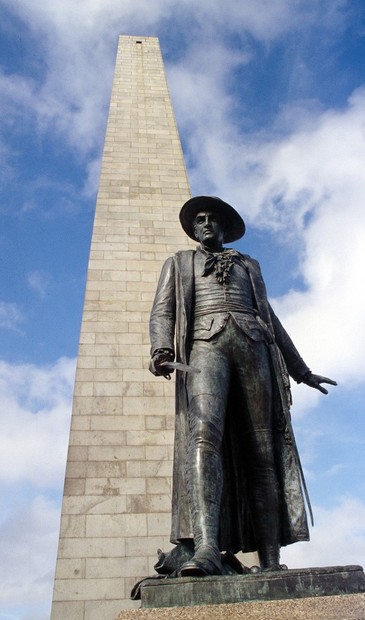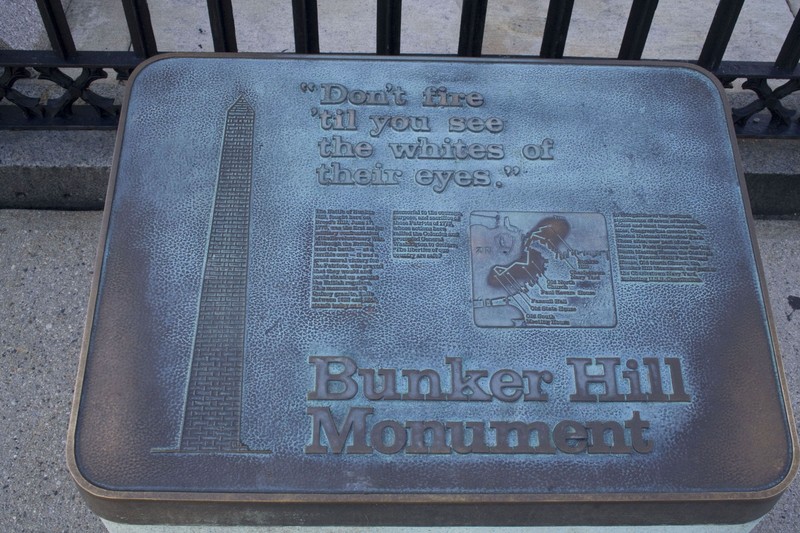Bunker Hill Monument
Introduction
Text-to-speech Audio
Images
Photograph of the Bunker Hill Monument in Boston, MA.

Marker at monument detailing some details of the battle of Bunker Hill.

Backstory and Context
Text-to-speech Audio
On June 17, 1775, General William Howe led nearly 2,000 to the shores of the Charlestown Peninsula to begin one of the first offensive attacks on colonial forces of the formal American Revolutionary War. Days before, leaders of the colonial army learned that British were sending troops to occupy hills surrounding Boston which would effectively give them full control of Boston Harbor. As the British lined up in stark formation, they assaulted two colonial positions which resulted in some casualties for the British Army. Despite the colonial army putting up a fight, they were running low on ammunition quickly and were forced to retreat. The British forces took control over the land, but suffered the most deaths to their forces out of the conflict. The British forces lost 800 men in the war while the colonial army lost only 100 men.
George Washington was given notice of the battle in a report during a visit to New York City and the report showed the many casualties on the British side despite his forces losing. Washington was filled with hope that this meant the conflict could turn over to his side’s favor in the long run. The Massachusetts Committee of Safety sent a report of the battle to England, but it did not reach the country. An official account arrived on July 20 to England leaders and the report caused friction between the Tories and Whigs with the high number of troops dead worrying the British. This only hardened King George’s disapproval against the colonies.
The Bunker Hill Monument was one of the first ones constructed in the nation. There were two other memorials at the site of the monument that were dedicated to Dr. Joseph Warren and Col. William Prescott, who both were deemed heroes of Bunker Hill. Prescott is the one to have coined the phrase:
”Don’t fire until you see the whites of their eyes.” ~Col. William Prescott
The monument is not located on the actual Bunker Hill, but it is instead located on Breed’s Hill, where most of the conflict took place at. William Ticknor, a Boston lawyer, first suggested the monument while meeting a few men for breakfast at Col. Thomas Perkin’s home. It was completed and constructed between 1825 and 1843 made out of granite. The total number of steps leading to the very top is 294.
Sources
"Battle of Bunker Hill." History.com. A&E Television Networks. May 8th, 2015. Accessed May 27th, 2021.
“Welcome to Bunker Hill.” National Park Service. Accessed May 27th, 2021.
